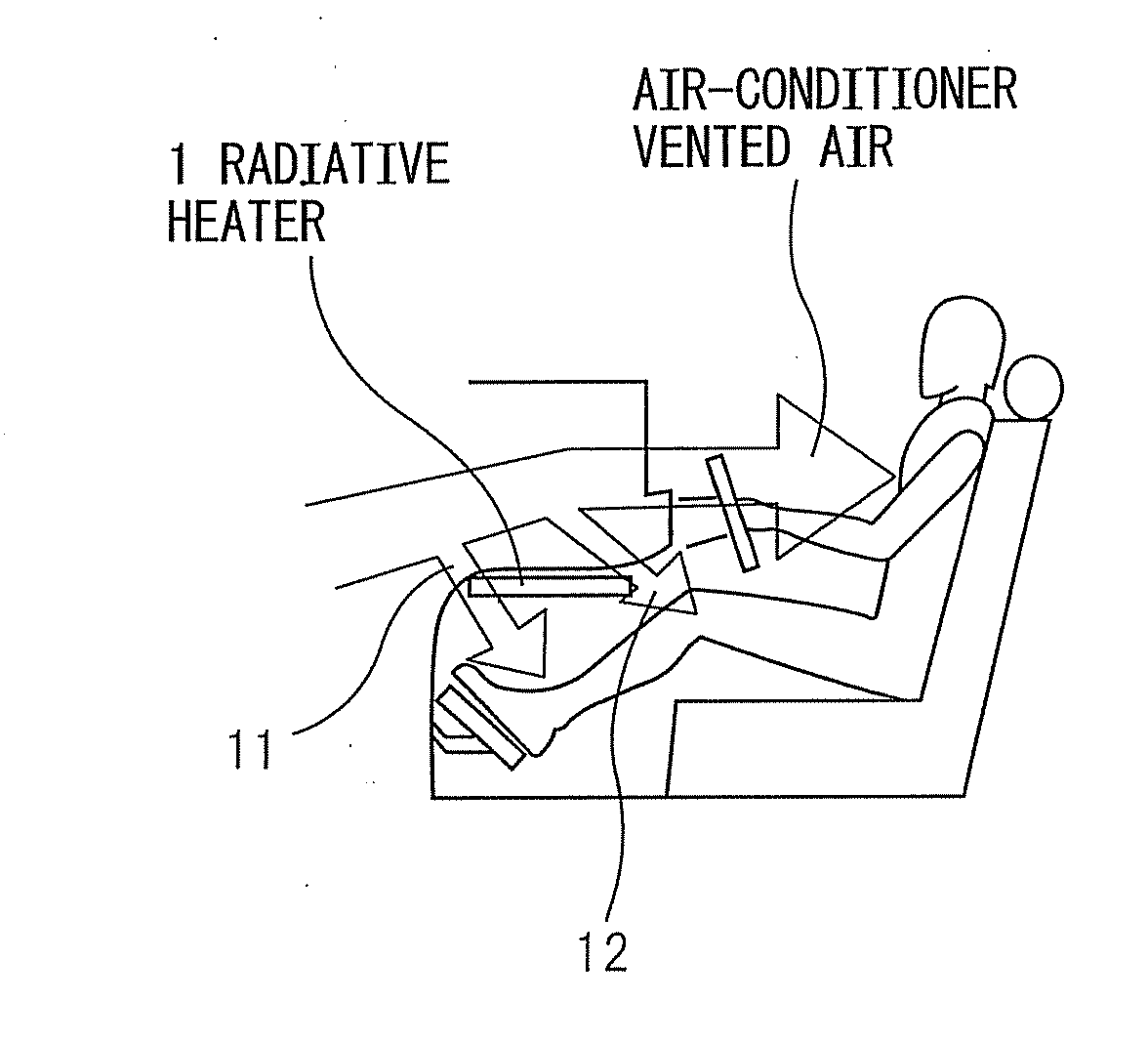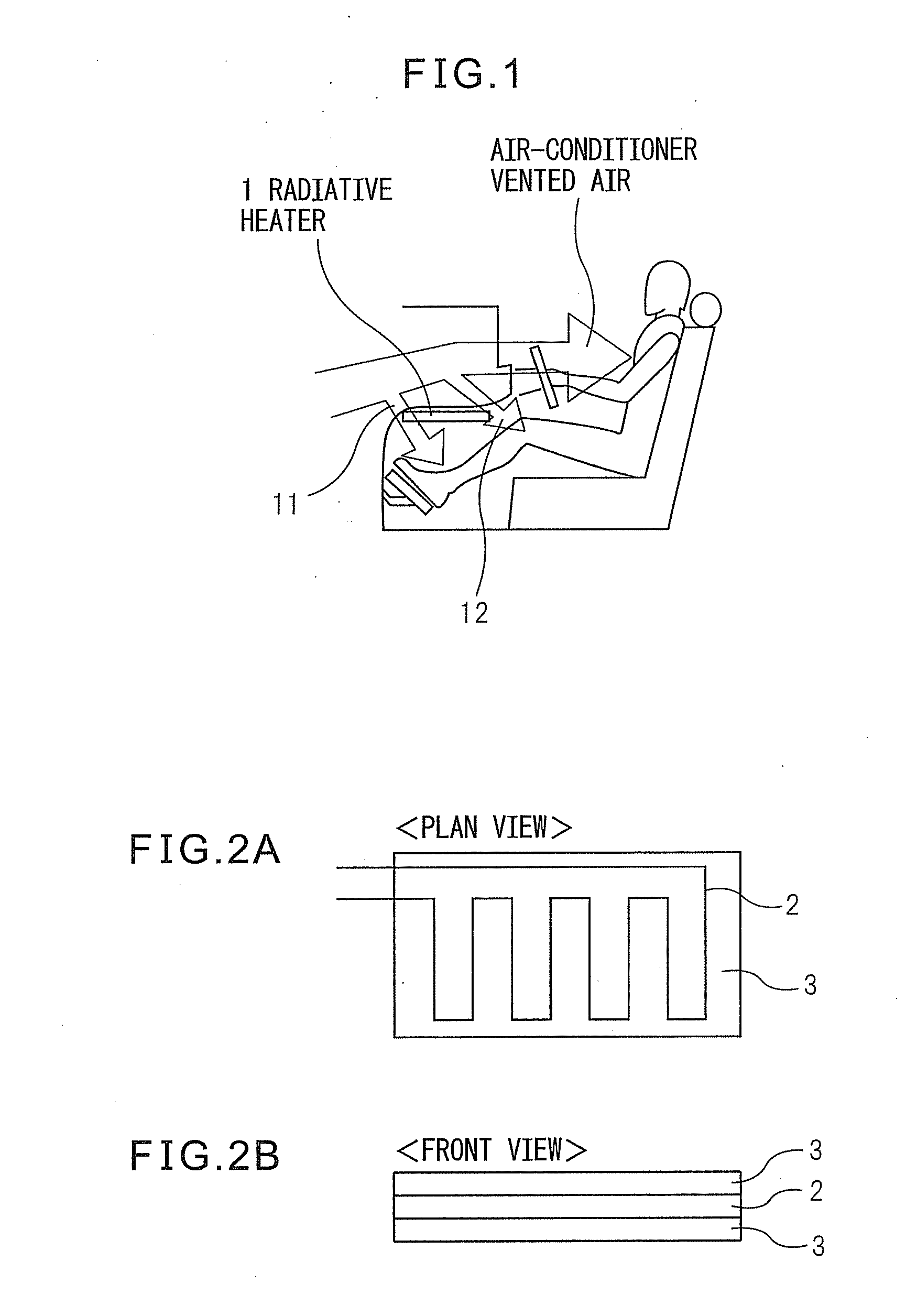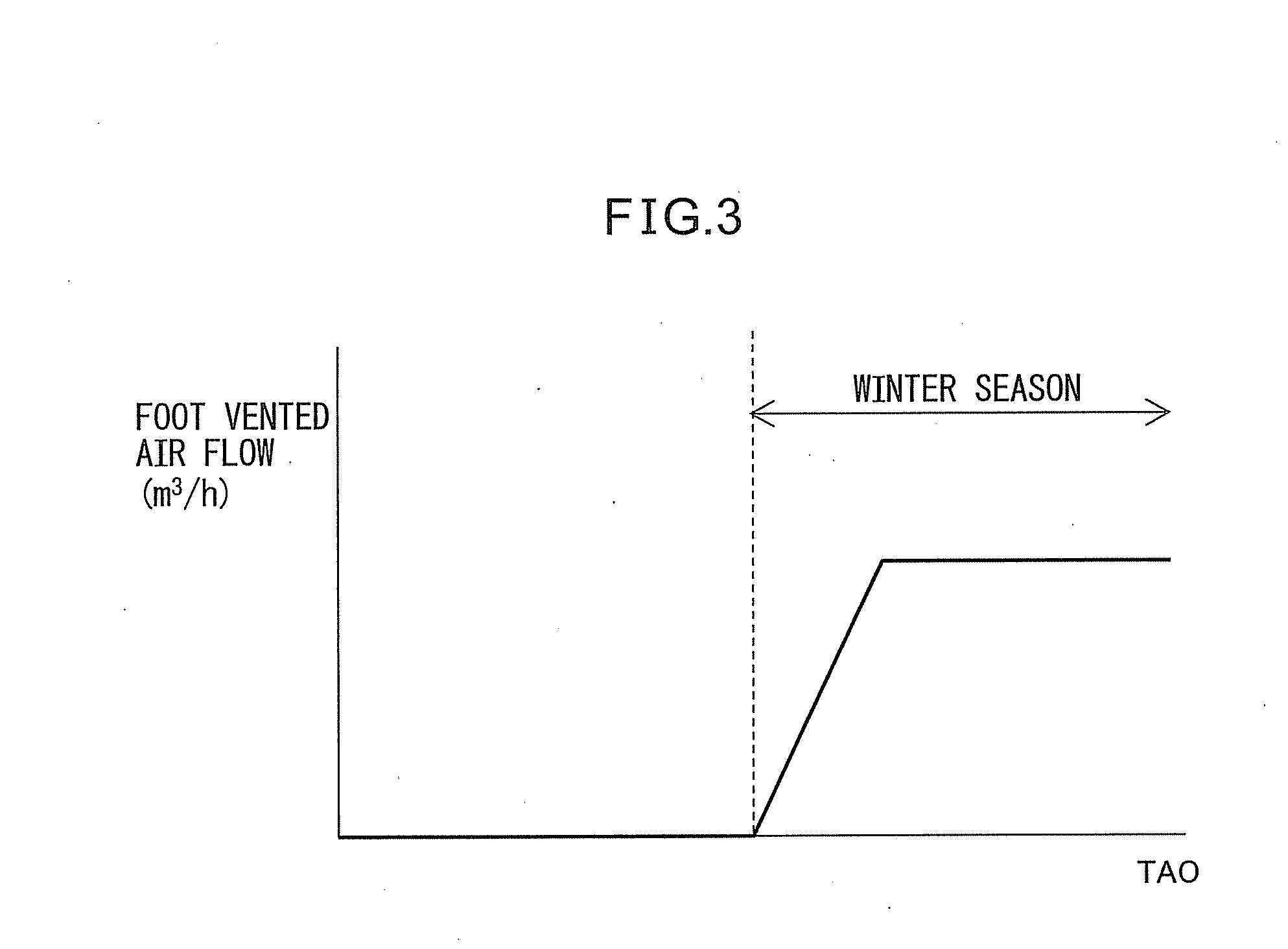Vehicular heating system
a heating system and foot technology, applied in the field of vehicles, can solve the problems of insufficient or too high temperature sense at the feet, and achieve the effects of raising the temperature of the foot area, quick warming, and quick warming
- Summary
- Abstract
- Description
- Claims
- Application Information
AI Technical Summary
Benefits of technology
Problems solved by technology
Method used
Image
Examples
first embodiment
[0045]Next, the unique features of radiative heating will be explained, then an embodiment of the present invention will be explained. As shown in FIGS. 2A and 2B, the radiative heater 1 in one embodiment of the present invention is placed near the top of the feet of the driver in the wall surface under the steering wheel column of the vehicle. This efficiently heats the foot parts, which are particularly susceptible to cold and heat in the body, locally by mainly radiant energy.
[0046]This embodiment of the present invention makes good use of such features of the radiative heater and aims at satisfying the warmness sense level of the feet while realizing fuel savings by control linked with the car air-conditioner.
[0047]An electric heater or other radiative heater uses radiative heat for heating. Therefore, unlike when blowing warm air to warm the legs, a small amount of heat gives the same warmness sense level, so the thermal efficiency is good. A warmness sense level obtained by co...
second embodiment
[0055]The next second embodiment considers not only the fuel efficiency due to the characteristics of the radiative heater, but also the characteristics of the vehicle so as to control the passenger compartment air-conditioner and the radiative heater. The air-conditioning unit (HVAC) houses a heater core which acts as a heat exchanger for heating use. This heater core uses the cooling water (warm water) of the vehicle driving motor as a heat source for heating the air. When the engine water temperature of the cooling water of the engine is around a certain predetermined threshold value and the heat source which is used for heating is switched as explained next, the thermal efficiency rises and in turn the fuel economy can be realized.
[0056]When utilizing the heater core of the air-conditioning unit (HVAC) for heating, if there is an extra margin of heat as a heat source in the cooling water (warm water) (when the engine water temperature is a certain predetermined value or more), n...
third embodiment
[0069]As shown in FIGS. 2A and 2B, when using the radiative heater 1, it is necessary that it be able to be used safely without concern over high temperature burn injuries and low temperature burn injuries. “High temperature burn injuries” mean burn injuries which instantaneously are caused, while “low temperature burn injuries” are burn injuries in which for example the skin is in contact with a 44° C. heat source for 6 hours whereupon the cells at that part are destroyed down deep under the skin resulting in burn injuries.
[0070]It is known that right after a passenger gets in a vehicle in the winter season, he or she easily feels cold due to the passenger compartment not being warmed up. Therefore, in particular, the foot parts are heated by local radiative heating using the radiative heater 1. In such a case, at the start of the heating, there is a concern that the temperature of the heating element 2 of the radiative heater 1 will rapidly rise and cause high temperature burn inj...
PUM
 Login to View More
Login to View More Abstract
Description
Claims
Application Information
 Login to View More
Login to View More - R&D
- Intellectual Property
- Life Sciences
- Materials
- Tech Scout
- Unparalleled Data Quality
- Higher Quality Content
- 60% Fewer Hallucinations
Browse by: Latest US Patents, China's latest patents, Technical Efficacy Thesaurus, Application Domain, Technology Topic, Popular Technical Reports.
© 2025 PatSnap. All rights reserved.Legal|Privacy policy|Modern Slavery Act Transparency Statement|Sitemap|About US| Contact US: help@patsnap.com



